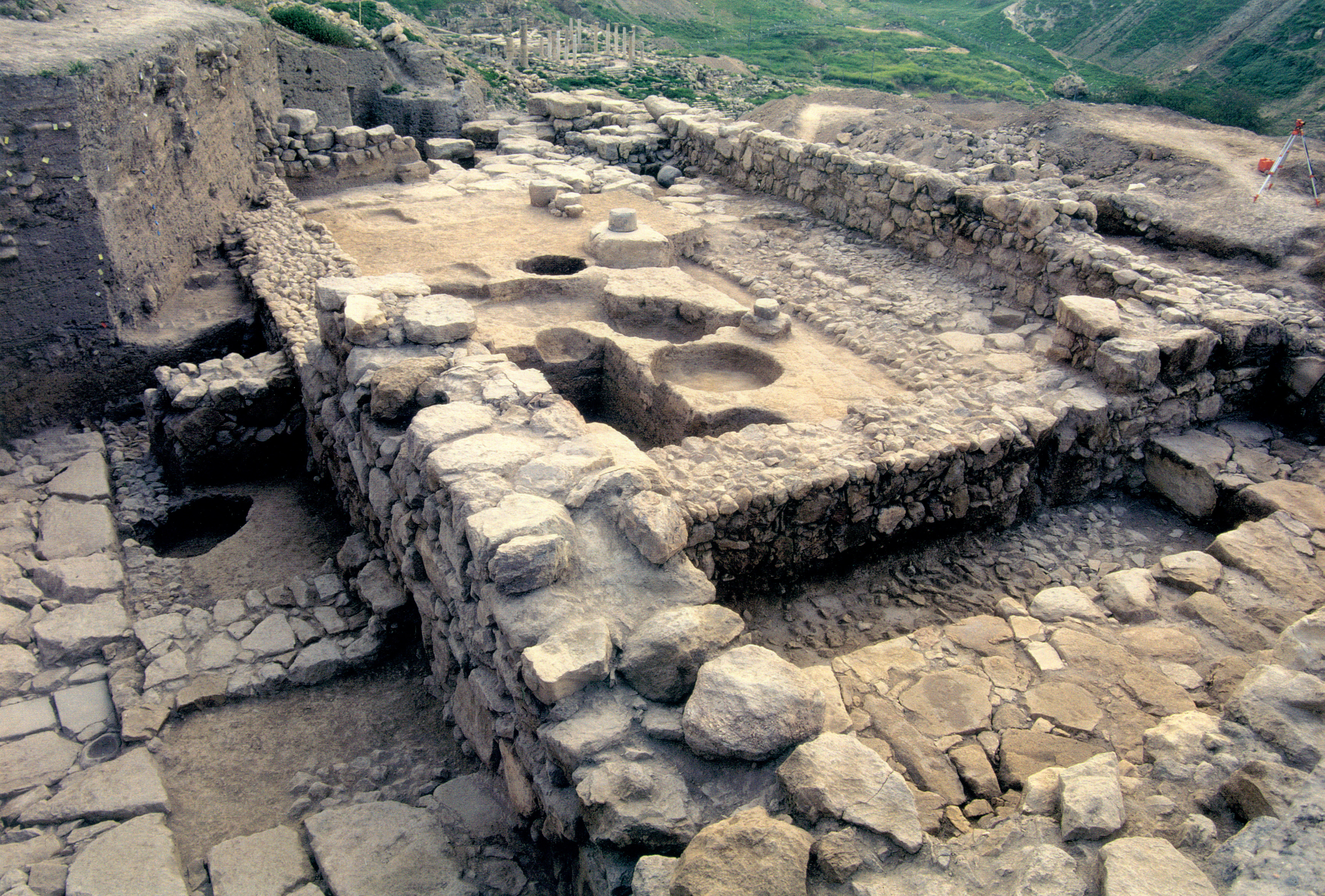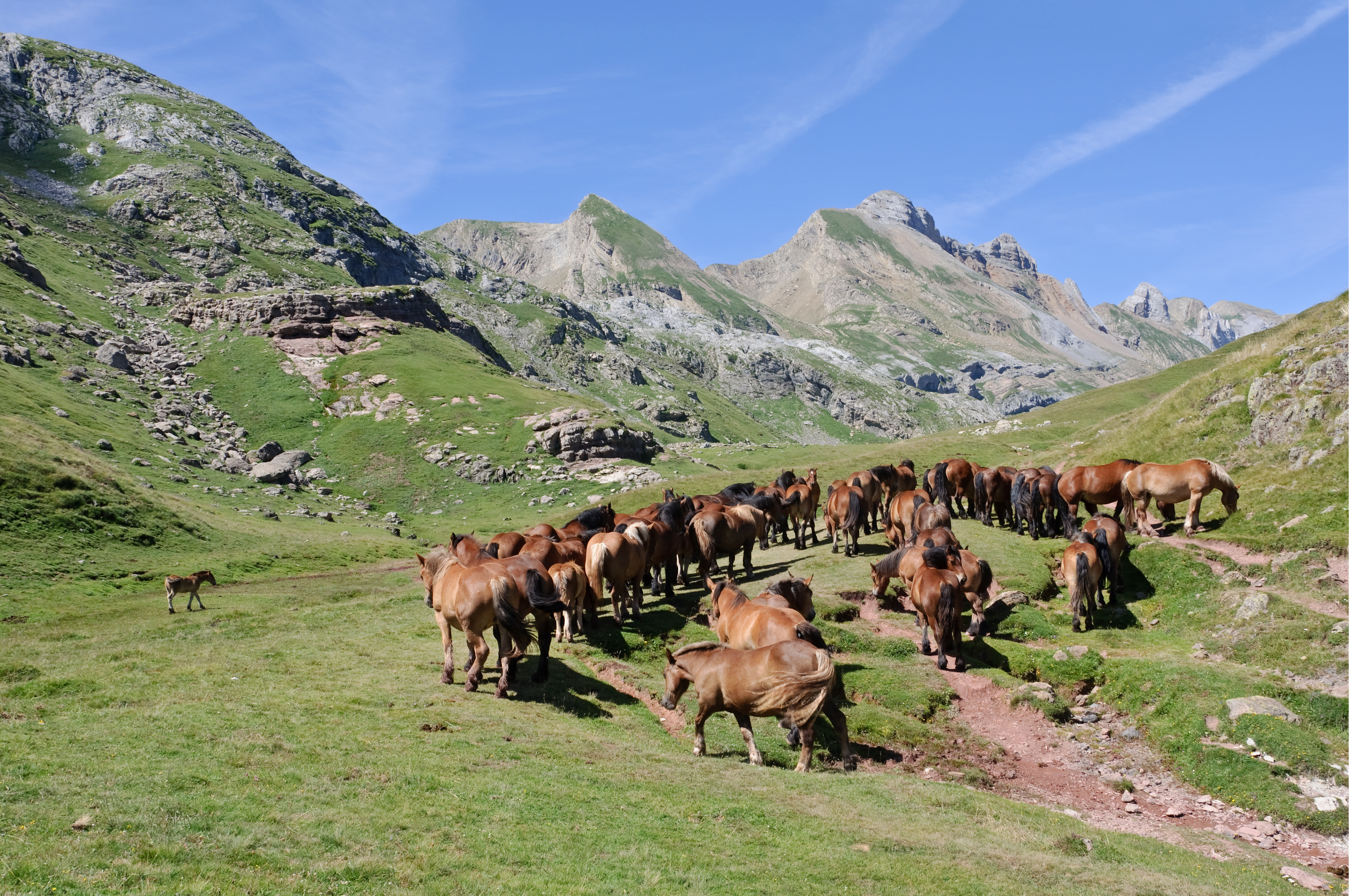|
Wadi Hammeh 27
Wadi Hammeh 27 is a Late Epipalaeolithic archaeological site in Pella, Jordan. It consists of the remains of a large settlement dating to the Early Natufian period, about 14,500 to 14,000 years ago. The people of the Natufian culture were nomadic foragers, but at Wadi Hammeh 27 they built large, durable dwellings that were maintained and revisited over many generations. The excavators of the site therefore interpret it as a substantial 'base camp' and forerunner of the first sedentary villages that were established in the area in the succeeding Pre-Pottery Neolithic period. References Further reading * External Links Photos of Wadi Hemmehat the American Center of Research The American Center of Research (ACOR) is a private, not-for-profit scholarly and educational organization. Based in Alexandria, Virginia, with a facility in Amman, Jordan, ACOR promotes knowledge of Jordan and the interconnected region, past and ... {{Epipalaeolithic Southwest Asia Archaeological ... [...More Info...] [...Related Items...] OR: [Wikipedia] [Google] [Baidu] |
Late Epipalaeolithic
The Epipalaeolithic Near East designates the Epipalaeolithic ("Final Old Stone Age", also known as Mesolithic) in the prehistory of the Near East. It is the period after the Upper Palaeolithic and before the Neolithic, between approximately 20,000 and 10,000 years Before Present (BP). The people of the Epipalaeolithic were nomadic hunter-gatherers who generally lived in small, seasonal camps rather than permanent villages. They made sophisticated stone tools using microliths—small, finely-produced blades that were hafted in wooden implements. These are the primary artifacts by which archaeologists recognise and classify Epipalaeolithic sites. The start of the Epipalaeolithic is defined by the appearance of microliths. Although this is an arbitrary boundary, the Epipalaeolithic does differ significantly from the preceding Upper Palaeolithic. Epipalaeolithic sites are more numerous, better preserved, and can be accurately radiocarbon dated. The period coincides with the gradual r ... [...More Info...] [...Related Items...] OR: [Wikipedia] [Google] [Baidu] |
Archaeological Site
An archaeological site is a place (or group of physical sites) in which evidence of past activity is preserved (either prehistoric or historic or contemporary), and which has been, or may be, investigated using the discipline of archaeology and represents a part of the archaeological record. Sites may range from those with few or no remains visible above ground, to buildings and other structures still in use. Beyond this, the definition and geographical extent of a "site" can vary widely, depending on the period studied and the theoretical approach of the archaeologist. Geographical extent It is almost invariably difficult to delimit a site. It is sometimes taken to indicate a settlement of some sort although the archaeologist must also define the limits of human activity around the settlement. Any episode of deposition such as a hoard or burial can form a site as well. Development-led archaeology undertaken as cultural resources management has the disadvantage (or the ben ... [...More Info...] [...Related Items...] OR: [Wikipedia] [Google] [Baidu] |
Pella, Jordan
Pella ( gr, Πέλλα, ) was an ancient city in what is now northwest Jordan, containing ruins from the Neolithic, Chalcolithic,Bronze Age, Iron Age, Canaanite, Hellenistic and Islamic periods. It is located in a rich water source within the eastern foothills of the Jordan Valley, close to the modern village of Ṭabaqat Faḥl ( ar, طبقة فحل) some south of the Sea of Galilee (Lake Tiberias). The site is situated north of Amman: a drive of about an hour and a half (due to the difficult terrain), and an by car from Irbid, in the north of the country. Pella's ruins – predominantly temples, churches, and housing – have been partially excavated by teams of archaeologists; they attract thousands of tourists annually but especially in spring, during which time the area is awash with spring flowers. Name The Semitic name of the ancient, pre-Hellenistic site, was Pahil or Pihil. Pehal is the name under which the city is mentioned in early Egyptian (Bronze Age) historical ... [...More Info...] [...Related Items...] OR: [Wikipedia] [Google] [Baidu] |
Natufian Culture
The Natufian culture () is a Late Epipaleolithic archaeological culture of the Levant, dating to around 15,000 to 11,500 years ago. The culture was unusual in that it supported a sedentary or semi-sedentary population even before the introduction of agriculture. The Natufian communities may be the ancestors of the builders of the first Neolithic settlements of the region, which may have been the earliest in the world. Some evidence suggests deliberate cultivation of cereals, specifically rye, by the Natufian culture, at Tell Abu Hureyra, the site of earliest evidence of agriculture in the world. The world's oldest known evidence of the production of bread-like foodstuff has been found at Shubayqa 1, a 14,400-year-old site in Jordan's northeastern desert, 4,000 years before the emergence of agriculture in Southwest Asia In addition, the oldest known evidence of possible beer-brewing, dating to approximately 13,000 BP, was found at the Raqefet Cave in Mount Carmel near Haifa in I ... [...More Info...] [...Related Items...] OR: [Wikipedia] [Google] [Baidu] |
Foragers
A traditional hunter-gatherer or forager is a human living an ancestrally derived lifestyle in which most or all food is obtained by foraging, that is, by gathering food from local sources, especially edible wild plants but also insects, fungi, honey, or anything safe to eat, and/or by hunting game (pursuing and/or trapping and killing wild animals, including catching fish), roughly as most animal omnivores do. Hunter-gatherer societies stand in contrast to the more sedentary agricultural societies, which rely mainly on cultivating crops and raising domesticated animals for food production, although the boundaries between the two ways of living are not completely distinct. Hunting and gathering was humanity's original and most enduring successful competitive adaptation in the natural world, occupying at least 90 percent of human history. Following the invention of agriculture, hunter-gatherers who did not change were displaced or conquered by farming or pastoralist groups in m ... [...More Info...] [...Related Items...] OR: [Wikipedia] [Google] [Baidu] |
Sedentism
In cultural anthropology, sedentism (sometimes called sedentariness; compare sedentarism) is the practice of living in one place for a long time. , the large majority of people belong to sedentary cultures. In Sociocultural evolution, evolutionary anthropology and archaeology, ''sedentism'' takes on a slightly different sub-meaning, often applying to the transition from nomadic society to a Lifestyle (sociology), lifestyle that involves remaining in one place permanently. Essentially, sedentism means living in groups permanently in one place. The invention of agriculture led to sedentism in many cases, but the earliest sedentary settlements were pre-agricultural. Initial requirements for permanent, non-agricultural settlements For small-scale nomadic societies it can be difficult to adopt a sedentary lifestyle in a landscape without on-site agricultural or livestock breeding resources, since sedentism often requires sufficient year-round, easily accessible local natural resourc ... [...More Info...] [...Related Items...] OR: [Wikipedia] [Google] [Baidu] |
Pre-Pottery Neolithic
The Pre-Pottery Neolithic (PPN) represents the early Neolithic in the Levantine and upper Mesopotamian region of the Fertile Crescent, dating to years ago, (10000 – 6500 BCE).Richard, Suzanne ''Near Eastern archaeology'' Eisenbrauns; illustrated edition (1 Aug 2004) p.24/ref> It succeeds the Natufian culture of the Epipalaeolithic Near East (also called Mesolithic), as the domestication of plants and animals was in its formative stages, having possibly been induced by the Younger Dryas. The Pre-Pottery Neolithic culture came to an end around the time of the 8.2-kiloyear event, a cool spell centred on 6200 BCE that lasted several hundred years. It is succeeded by the Pottery Neolithic. Chronology Pre-Pottery Neolithic A The Pre-Pottery Neolithic is divided into Pre-Pottery Neolithic A (PPNA 10000 – 8800 BCE) and the following Pre-Pottery Neolithic B (PPNB 8800 – 6500 BCE). These were originally defined by Kathleen Kenyon in the type site of Jericho (Palesti ... [...More Info...] [...Related Items...] OR: [Wikipedia] [Google] [Baidu] |
American Center Of Research
The American Center of Research (ACOR) is a private, not-for-profit scholarly and educational organization. Based in Alexandria, Virginia, with a facility in Amman, Jordan, ACOR promotes knowledge of Jordan and the interconnected region, past and present. Prior to 2020, ACOR was known as The American Center of Oriental Research. History ACOR's history spans back to the foundation of the American School of Oriental Research in 1900 in east Jerusalem, supporting the study of the MENA region. As the region changed during the mid-20th century, the foundation of a permanent research center for Americans working or studying in the Arab World was needed, and in 1968 ACOR itself was created as "The American Research Center in Amman." The center was intended to serve as a consortium in support of North American projects working in the Middle East, specifically including Jordan, Syria, Lebanon, Iraq, Saudi Arabia, Yemen, and territories of the Arabian Gulf. It works in or with the people ... [...More Info...] [...Related Items...] OR: [Wikipedia] [Google] [Baidu] |
Archaeological Sites In Jordan
Archaeology or archeology is the scientific study of human activity through the recovery and analysis of material culture. The archaeological record consists of artifacts, architecture, biofacts or ecofacts, sites, and cultural landscapes. Archaeology can be considered both a social science and a branch of the humanities. It is usually considered an independent academic discipline, but may also be classified as part of anthropology (in North America – the four-field approach), history or geography. Archaeologists study human prehistory and history, from the development of the first stone tools at Lomekwi in East Africa 3.3 million years ago up until recent decades. Archaeology is distinct from palaeontology, which is the study of fossil remains. Archaeology is particularly important for learning about prehistoric societies, for which, by definition, there are no written records. Prehistory includes over 99% of the human past, from the Paleolithic until the adve ... [...More Info...] [...Related Items...] OR: [Wikipedia] [Google] [Baidu] |



_1928_Natufian_culture_discovery.jpg)


.jpg)